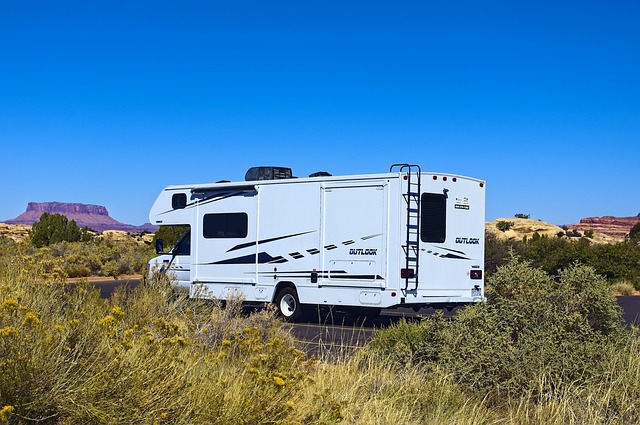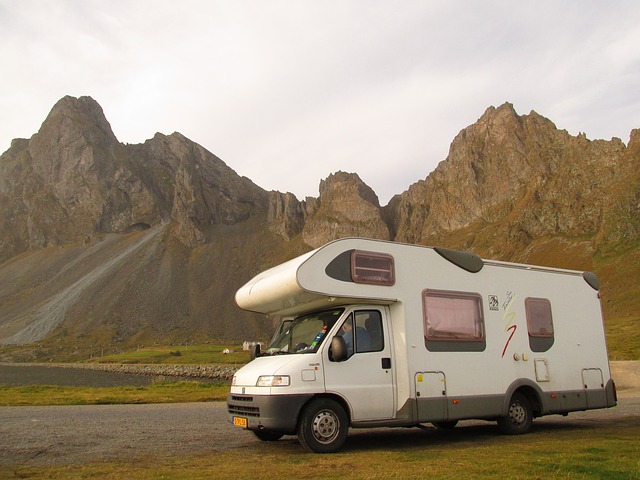
The feeling you get when your RV or trailer is loaded up and ready to hit the road for an adventure just can’t be beat.
Whether you’re headed on a family vacation, or a longer flexcation, or even planning to live full-time in your rig, there’s something about the day when all your planning and packing and anticipating comes to fruition that is very exciting.
So it’s understandable that you don’t want to slow down on your road trip to weigh your RV. After all the excitement and build-up, it’s kind of anti-climactic to have to take care of business. You may even be tempted to skip it.

How to Weigh Your RV
Although weighing your RV doesn’t rank very high on the list of exciting parts of your trip, it’s an important step. If you’re wondering, “Why do I need to weigh my RV?” here’s why.
Overloading your RV is a safety hazard that can cause tire blowouts, buckled frames, and other damage to your rig. Along with being expensive to fix, some of these equipment failures can be dangerous and cause accidents if you’re on the road when they happen. Knowing the weight of your RV or trailer can also help you determine the air pressure for your tires. If you’re weighing a trailer, this will also tell you what kind of vehicle you’ll need to tow it.
Finally, you’ll need to know your weight if you’re crossing certain bridges as some of them have weight limits.
Fueling Up
Before weighing your RV, travel trailer, or fifth wheel, you’ll want to fuel up. You want to know the maximum weight you’ll be carrying, which will be when your motorhome is fully fueled and ready to go. Also, make sure to have everything you’re traveling with onboard when you weigh. You’ll want to have all the people and gear, along with essentials like fuel, water, and propane all loaded up and in the spots where they’ll be traveling when you weigh. This can help you determine whether your trailer or RV is evenly balanced.

Getting Weighed at a Truck Stop
There are several options for places to get weighed. You can go to a truck stop and use CAT scales to weigh your rig. This usually costs between $10-20, and if you don’t need a certified weight receipt you may save a little. You can also make an appointment with an RV weighing specialist through a place like the RV Safety & Education Foundation to get a more accurate reading. They use a procedure called “wheel position weighing,” which is only available at RV weigh stations. This service costs $55 or so but is more accurate. You may also be able to weigh your rig at certain sand & gravel yards, grain elevators, farm co-ops, or feed mills…possibly even for free. Often these places only have single scales and you’ll have to make several passes to get weights for everything.
Chances are, you’ll have the easiest time weighing your RV at a truck stop along your route. This option requires the least amount of planning and is inexpensive. CAT, which makes many of the truck stop scales, has excellent step-by-step instructions and a video to help you weigh your vehicle. They also have some useful apps to help you locate and pay for your weighing.
Here are the steps to weighing your RV at a truck stop:
How to weigh an RV
RVs really only need one weight. Pull onto the truck stop scale so that your window lines up with the call box. Your front wheels should be on the first scale and your back wheels will be on the next one. If you have a tow vehicle, that should be on the third scale. Take your weight and record it. Then, it’s time to check your weights to make sure they’re safe for your RV.
How to weigh a travel trailer
Just as you would with an RV and a tow vehicle, make sure your vehicle lines up so your driver’s window is where the call box is. Your truck’s front wheels should be on the first scale, the back wheels on the second scale, and the trailer’s wheels on the third. For a travel trailer, you need two weights – the truck and trailer with weight distributing hitch engaged, and the truck and trailer without weight distributing hitch bars.
How to weigh a fifth wheel
With your fifth wheel, again align your driver’s side window with the call box. Make sure the truck’s front wheels are on the first scale, the rear wheels on the second, and the trailer’s axle is on the third. You’ll need two weights – the truck plus trailer and the truck only.

Evaluating the Results
How to evaluate my RV weight
Once you have weighed your RV, add the weight of your steer axle and drive axle together to get your rig’s total weight. You want this weight to be less than the gross vehicle weight rating (GVWR). Make sure your steer (or front) axle is less than the front gross axle weight rating. Make sure the drive (or rear) axle is less than the rear gross axle weight rating. If you’re towing another vehicle behind, make sure your gross weight is less than the gross combined weight rating.
How to evaluate my travel trailer weight
When you have your weights, you can compare your gross combined weight to your tow vehicle’s gross combined weight rating, your hitched truck weight to your tow vehicle’s gross vehicle weight rating, and your camper weight to your trailer’s gross vehicle weight rating. You also want to make sure your tongue weight is less than the tow vehicle hitch’s maximum tongue weight and that the tongue weight percentage is more than 10% so you don’t have sway.
How to evaluate my fifth wheel weight
Check your gross combined weight with your truck’s gross combined weight rating, your hitched truck weight against the truck’s gross vehicle weight rating, and the camper weight against the trailer’s gross vehicle weight rating. You also want to make sure the pin weight is less than your fifth wheel hitch’s maximum pin weight.
Although weighing your RV can sound like kind of a drag, it’s an important step to keeping you and your fellow travelers safe on the road and to ensure you keep your rig in tip-top shape!






